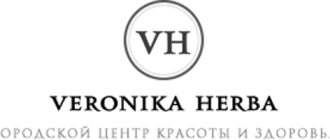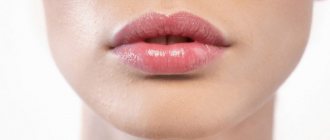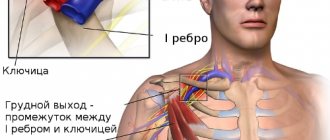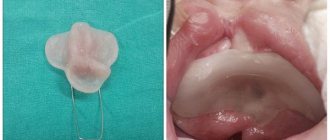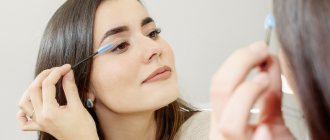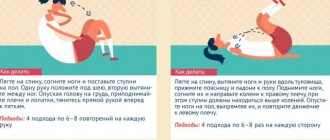How does the skin heal after surgery?
Scars are part of the healing process. They can form after surgery or if you cut yourself or otherwise damage your skin.
After surgery or a procedure, the wound may be bright red, swollen, or numb. After a few weeks, the developing scar may be hard to the touch, tight, raised, or lumpy. Over time it will become softer and smoother and less red. The healing of the scar after surgery will continue for 12–18 months.
to come back to the beginning
When should you not deal with scars at home?
Before starting any treatment, including getting rid of scars, you should consult your doctor. It will help you determine the most effective way to fight in your case.
It is definitely not recommended to use traumatic or unreliable products at home.
Treatment at home should be completely abandoned if in the area of the scar
- redness, irritation, and swelling of the skin are noted
- eczema, herpes or other skin diseases were discovered
- vessels appeared, the color of the defect changed dramatically
Scar care at home
Scars don't go away completely, but you can improve their appearance and reduce the discomfort they cause. Before following the recommendations below, talk to your dermatologist (skin doctor). In most cases, patients can begin performing them approximately 4 weeks after surgery.
Protecting Scars from the Sun
Exposure to sunlight can slow down scar healing. In addition, the scar may darken and become more visible.
It is important to protect the rumen when you are outdoors or when it may be exposed to sunlight. You can resort to the following measures:
- Apply sunscreen to the scar. Use a broad-spectrum sunscreen with a protection factor (SPF) of at least 30.
- Wear a hat with a wide brim to block out sunlight.
- Wear clothing designed to protect you from sunlight.
For more information about using sunscreen, see Understanding Sunscreen. You can find it through the search function on our website mskcc.org/pe or ask your nurse.
Scar massage
Massage can make the scar less hard. Gently massage the scar with your fingers for 1-2 minutes. You can do this 1-3 times a day.
Use of silicone products
Silicone products, such as silicone sheets or gels, can moisturize the scar and promote healing. You can use them under makeup and clothes.
Silicone wafers
Silicone sheets will help soften the scar and make it flatter.
To use a silicone plate, you need to cut it to the size of the scar and place it on top of the scar. You can leave the plate for several hours or overnight. You can wash the plate daily and reuse it. Silicone wafers are available under brands such as Cica-Care®, Rejuveness®, Scar Fx® and ScarGuard®, among others.
Silicone gels
Apply silicone gel to the scar and let it dry. You can do this daily. Silicone gels are available under brands such as Biocorneum®, Kelo-cote®, Mederma® and ScarGuard, among others.
Applying makeup
To hide a scar, you can apply a special makeup called camouflage. Thanks to camouflage makeup, the color of the scar will match the natural color of the skin. Camouflage makeup is produced, in particular, under such trademarks as Dermablend® and SmartCover®.
To make the red scar blend better with your skin color, you can also try applying green makeup to it.
to come back to the beginning
Surgical sutures: an art that does not require sacrifices, but helps to avoid them
Sutures are used in surgery during operations to connect skin tissue during incisions, as well as the walls of internal organs. They are also used in traumatology - when treating wounds resulting from injuries. Applying sutures stops bleeding and prevents infection. Depending on the damaged organs, tissue characteristics, depth of the wound and other nuances, different techniques, materials, and technologies can be used.
It would seem that innovation always wins. And new technological methods of connecting tissues during surgery should slowly replace manual sutures.
For example, connecting the edges of a skin wound using titanium staples. Or, as this method is also called, skin stapler. There is also a special device for removing these paper clips. Paper clips that dissolve by themselves are also used.
Special endoscopic stapling devices are also used. Some of them allow you to carry out all manipulations literally with one hand. All these technologies significantly reduce the time of operations and make the work of surgeons and assistants easier.
But the use of expensive equipment and materials is not always available and cannot always replace traditional suture material. The surgeon's hands are a universal and reliable device. An experienced doctor will always select the ideal needle and thread for each specific case and tie the knots correctly. All this affects the outcome of the operation. Moreover, the negative results of an unprofessionally executed seam can be felt both immediately and after a long time.
Therefore, the manual suturing technique is still the main one.
Seam: beautiful or reliable?
If we talk about the sutures that connect the edges of the wound, then there are several ways. Skin sutures always have cosmetic consequences for the patient's appearance. And doctors usually take this into account.
A continuous intradermal cosmetic suture is considered the most gentle in terms of preserving the skin.
Metal staples are often used - they do not leave transverse stripes on the skin during healing.
To connect the tissues of internal organs, for example, tendons, blood vessels, liver, etc., there are special sutures. Interestingly, they differ in technique depending on the type of organ.
Based on the location of the suture, the characteristics of the tissue and organ, as well as the importance of appearance for the patient, the surgeon chooses a specific technique.
Knot for memory
A securely tied knot is not just the final point in the operation. This is a large part of her success. The professionalism of the surgeon in performing this technique determines how well the tissues will heal and how safe the recovery process will be.
There can be any number of knots on one seam. The more there are, the higher the reliability. If the thread breaks in one place, other stitches will remain and hold the fabric tightly.
It is important not to overtighten the tissue at the junction to prevent necrosis from developing. But at the same time ensure the necessary density.
The knot must be tightened the first time, otherwise the wound will rip apart.
Surgical threads: a variety that needlewomen would envy
There are now a lot of types of surgical threads. They vary in both brands and characteristics. There are several classifications:
1) Absorbable and non-absorbable
Absorbable
These include materials made from polymer and metal threads. Advantages of the material:
— strength that remains in tissues for a long time;
- good manipulative qualities;
— manufacturability;
- inexpensive price.
They are eliminated from the body by themselves and are used if the tissues grow together in a short time - up to 120 days. Or to connect internal organs. But again, in the case when long-term or even eternal fastening of tissues is not required.
Non-absorbable
These materials include threads made from both synthetic and natural fibers. For quite a long time, threads based on polyglycolic acid and a copolymer of lactide and glycolide with a resorption period of up to 90 days have been used in surgery. They are much stronger than catgut and can cause a minor inflammatory reaction in the body. However, Vicryl and Dexon are less elastic compared to non-absorbable materials. Such materials are not recommended for use in cases where long-term preservation of the strength of the seams is advisable.
One of the modern suture materials is polysorb. Its structure: braided composite threads based on polyglycolic acid using a polymer coating. Comparative assessment of the material:
- It is not inferior to silk in terms of handling characteristics.
- Polysorb is pulled through fabrics with graceful ease, just like monofilament thread.
- Strength indicators are higher than those of vicryl.
- Another plus is the increased reliability of the node.
2) Natural and synthetic
Natural threads made of silk, flax, cotton and catgut, as practice has shown, have many disadvantages.
Rice. Catgut thread
Rice. Silk thread
In synthetic fabrics, the time of biodegradation is more accurately determined - the ability to be independently excreted from the body. It is important to know exactly how long a given material can hold tissue in a tight state. If the thread weakens or breaks before the tissues heal, it can be extremely dangerous. Catgut, for example, is unpredictable in this regard. But linen and cotton, due to their naturalness, can be conductors of microbes in the fabric, so they, too, have practically ceased to be used.
Synthetic suture material can also be of several types, depending on the material. There are polyamide (nylon), polyester (lavsan), polypropylene, polymer, fluoropolymer, etc. As with techniques, the surgeon chooses the thread depending on the situation and personal preference. This choice is usually not discussed with the patient.
Rice. Nylon thread
Rice. Dacron thread
3) According to their structure, threads are divided into monofilament (monofilament) and braided. Simply put, braided threads are several threads connected together using twisting or weaving. Monofilament is more gentle on fabrics, but less durable. A rope or braid is stronger, but tougher.
Rice. Monofilament
Interestingly, new technologies are leading the way when it comes to materials selection, in contrast to innovative suturing techniques. Doctors are actively switching to modern types of suture material, realizing their obvious advantages, safety and reliability.
Hot topic - surgical needles
When most people hear the word “needle,” they think of a straight, shiny tailor’s needle. But in surgery, most needles are curved to some degree. More curved needles are used to stitch tissue deep in the wound. The sharpness and shape of the needle tip depends on the application. For example, needles for connecting vascular tissues are especially sharp and require special sharpening.
An interesting fact is that black needles are sometimes found. This way, during long-term operations, the load on the doctor’s eyes is less.
In the 80-90s of the last century, atraumatic suture material appeared. A thread rolled into the tip of a needle does not injure tissue as it passes, since its thickness coincides with the thickness of an eyeless needle. Also the thread does not fold. This invention was a real breakthrough in surgery.
A good suture is a sterile suture
Along with the innovation of materials and technologies, simple rules for observing antiseptic and aseptic requirements play a huge role in the success of suturing. All surgical procedures must take place in facilities where routine aseptic preparation is performed on a regular basis.
Most materials and instruments arrive in surgery sterilized and are intended for single use. All this significantly reduces the risk of infection when applying and processing sutures.
The last chord - removing the seams
If there are no complications, the stitches are removed by a paramedic or nurse. The presence of a surgeon is not required. Usually the sutures are removed a week and a half after the operation. In older people, this period may last longer, since the tissues do not heal as well.
The seam is pre-treated with disinfectants, for example, iodine. The thread is cut and pulled out, after which the seam is processed again.
This procedure is not entirely painless. The sensations may vary depending on the type and complexity of the operation, and how well the wound has healed.
It is important to carefully monitor the suture after surgery and removal of threads. If the patient seems that something is going wrong, that the wound is not healing so quickly, if it has begun to fester, he should not hesitate and be sure to consult a doctor again.
Medical treatment of scars
There are also medical treatments that can make the scar look better and cause less discomfort. Examples of such treatments include:
- steroid injections (shots);
- dermabrasion (surgical scraping of the upper layers of skin);
- laser treatment;
- operation.
These treatments may be used after the scar has healed sufficiently on its own.
Your dermatologist will tell you whether any of them are right for you. to come back to the beginning
Care in the first month after endoprosthetics
The first time after removing the sutures, the wound should not be wetted or washed with running water. It needs to be treated with an antiseptic daily. In the future, you should wash with antibacterial soap (for example, Safeguard
).
After taking a shower, the knee must be blotted with sterile gauze and lubricated with brilliant green or alcohol
. It is better to do this with a sterile cotton swab.
If you were discharged from the hospital a couple of days after the operation, be prepared to take care of the suture yourself. Be sure to buy brilliant green, hydrogen peroxide, alcohol, a roll of paper patch, sterile gauze and cotton swabs at the pharmacy. You will need all this to treat the wound.
To speed up healing, the seam can be treated with special water-soluble ointments (Levomekol, Dioxyzol, Levasin). These drugs have an antimicrobial effect, that is, they inhibit the activity of pathogenic microorganisms. Thanks to this, medications prevent the development of infectious complications.
For completely healed wounds, panthenol-containing products (Bepanten, Panthenol) are excellent. They have a trophic and regenerative effect, thereby accelerating tissue restoration.
Knee replacement in the Czech Republic: guarantees, prices, rehabilitation, reviews and statistics.
Find out more
Minimally invasive endoprosthetics in the Czech Republic: doctors, rehabilitation, terms and prices.
Find out more
How to understand that complications have arisen after suturing?
Alarming symptoms after removing the “eight” are as follows:
- heavy bleeding that lasts more than a day;
- severe pain, throbbing pain that prevents you from sleeping or leading a normal life;
- very large swelling;
- redness in the intervention area;
- blood in saliva in the first three days after the intervention;
- elevated body temperature.
In all these cases, you must consult your doctor. It is possible that stitches will have to be stitched again to avoid complications.
Remember that removing teeth does not hurt, and removing stitches does not hurt either! The main thing is that this work is performed by a professional.
Complication of suppuration of the surgical suture
If adequate toileting of the postoperative wound is not carried out in a timely manner, then a fistula tract may form at the site of the ineffective suppurating suture. If the pus does not find a way out, it can melt and break through the skin. This development of events will require additional excision of the fistula tract, application of sutures to the new surgical field, and the addition of antibacterial drugs internally. This lengthens the treatment time, makes it more painful and expensive. Among the reasons for the formation of a fistula: purulent inflammation, infection of soft tissues, especially hospital bacterial strains, rejection of suture material due to allergies. Those whose weight is significantly higher than normal and who have problems with the immune system have a higher risk of getting complicated healing. The timing of the appearance of a fistula is from a week to several months after surgery.
Its main manifestations:
- Induration, painful swelling, redness.
- Discharge from the healing area.
- Temperature up to 380.
Surgical intervention for a fistula tract (ligature fistula) is carried out in several stages.
- Preparation of the surgical field: treatment with an antiseptic (alcohol solution of iodine).
- Local anesthesia.
- Injection of dye (diamond green) into the fistula tract.
- Dissection of tissues, removal of suture material.
- Fistula excision.
- Stop bleeding, wash the wound, drainage and suturing.
Then a new suture is made according to the same principles as the initially suppurated one. Anesthesia and anti-infective therapy are used.
Postnova Maria, therapist, medical columnist
27,425 total views, 44 views today
( 59 votes, average: 4.12 out of 5)
Trophic ulcers: treatment
Hidradenitis: symptoms, treatment, warnings
Related Posts
Table of contents
- Etiology and pathogenesis
- Clinical manifestations
- Principles of treatment
Surgical scars (scars, scars on the face, scars on the body, scars on the skin, scars ) are dense connective tissue formations on the skin that occur when normal wound healing is disrupted or in the presence of an extensive wound due to invasive intervention. According to statistics, more than 200 million large and small operations are registered every year in the world, after which more than 170 thousand new scars appear in patients in the United States alone.
In our company you can purchase the following equipment for removing surgical scars:
- M22 (Lumenis)
- Fraxel (Solta Medical)
- AcuPulse (Lumenis)
- Maximus (Pollogen by Lumenis)
Clinical manifestations of traumatic scars
Currently, more than 20 different classifications are known, most of which provide for the following types of scars:
- Keloid
- Hypertrophic
- Normotrophic
- Hypotrophic
- Atrophic
In 1990, the Vancouver Scar Scale (VSS) was first introduced, which today has several modifications. According to one of them, scars are assessed by a number of points from 0 to 11 ( Table 1 ).
Table 1. Vancouver Scar Rating Scale
|
|
| normotrophic - 0 points; · hypertrophic homogeneous - 1 point; · hypertrophic with nodules – 2 points; · noticeable keloid – 3 points; · pronounced keloid – 4 points. | normal - 0 points; · slight compaction – 1 point; · pronounced induration – 2 points. |
|
|
| · healthy skin – 0 points; · slight erythema - 1 point; · severe erythema - 2 points. | · tension - 0 points; · itching – 1 point; burning sensation - 2 points; · pain - 3 points. |
Some features of postoperative scars and methods of their treatment:
- Normally, the scar at the site of a surgical wound that has healed without complications becomes smooth, thread-like, almost uniform in color and density with the surrounding tissues within 6 months (primary healing).
- A sign of a complicated course of the wound process is a dense, uneven, “star-shaped” scar, often made of whitish or purple tissue (secondary healing).
- A dense, purple scar protruding above the surrounding skin may form.
- If the patient is prone to excessive formation of connective tissue, a keloid often forms ( Fig. 1 ).
- Evidence of cavities drainage is the presence of several small scars in addition to the main one. Their number indirectly indicates the volume of intervention, and their condition indicates the severity of the postoperative period.
Rice . 1. Keloid scars on the patient’s skin (Danish national service on dermato-venereology)
https://www.danderm-pdv.is.kkh.dk/atlas/7-54.html
Why do you need stitches after wisdom tooth removal?
Removing the “eight” is a surgical procedure that involves dissecting the tissue in the area of the “wise” tooth. After the tooth is extracted, the gum must be sutured so that it heals without complications. A classic example is when, after suturing, a person is scheduled for a follow-up visit to the dentist. At this stage, it is important to evaluate the process of tissue regeneration and make sure that there are no complications after wisdom tooth removal.
When else do you need stitches? For example, when a dental operation needs to be performed urgently, the dentist does not have the opportunity or time to perform blood clotting tests on the patient (a common picture during dental operations after injuries). In this case, the stitches perform the task of preventing bleeding.
